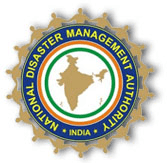Government to restructure and revamp NDMA
The NDMA (National Disaster Management Authority) observed its 10th Foundation day on 29 September 2014. On this occasion , the central government has announced that it will take steps to restructure and revamp NDMA
Why restructure?
The management of disasters in the past year especially the J&K floods has highlighted the inefficiency of the NDMA. Lack of connectivity in disaster hit areas was delaying the relief and rescue efforts. Also, many critical posts in the NDMA have remained vacant since the persons occupying the post resigned after the change in the central government.
Members of NDMA
The rank of the members of the NDMA has been reduced to Secretary of Union government from Union Minister of State. Also the post of the Vice-Chairman has been downgraded to the rank of Cabinet Secretary from that of Union Cabinet Minister.
NDRF (National Disaster Response Force) expanded
The Ministry of Home Affairs has decided to constitute two more battalions of NDRF, which is the disaster response agency of NDMA, in an attempt to strengthen its capacity for timely and effective response. These two battalions will be raised from SSB (Sashastra Seema Bal). Currently, NDRF consists of 10 battalions of various Central Armed Police Forces.
Improvement of Communication network
Another goal in the efforts to improve disaster management is to enhance the communication capabilities. A new mechanism for uninterrupted communication network is being developed. The Department of Telecommunications has been asked to setup a robust communication system with a greater capacity to withstand natural disasters. Also, a committee has been set up in the Department of Technology and tasked with submission of a report on improving communication networks during disasters in two months.
NDMA, NDRF and NIDM
- The Disaster Management Act of 2005 called for the constitution of NDMA and NDRF. The legislation also assigned NIDM (National Institute of Disaster Management) certain responsibilities that included capacity building, training, research, human resource development and policy advocacy. These three agencies form the pillars of disaster management in India.
- The NDMA, constituted in 2006, is the nodal agency for disaster management, and it lays down the policy, plans and guidelines and is also responsible for ensuring timely response to disasters. It can have a maximum of nine members, whose tenure is five years. The NDMA is also responsible for coordinating and working with the State Disaster Management authorities on disaster management plans and their execution.
- The NDRF was created in 2009 by the Ministry of Home Affairs. It functions at both central and state levels under the NDMA. It conducts awareness and preparedness camps other than the search, relief, rescue and rehabilitation operations during time of disaster.
Month: Current Affairs - September, 2014
Category: Government Schemes Current Affairs


